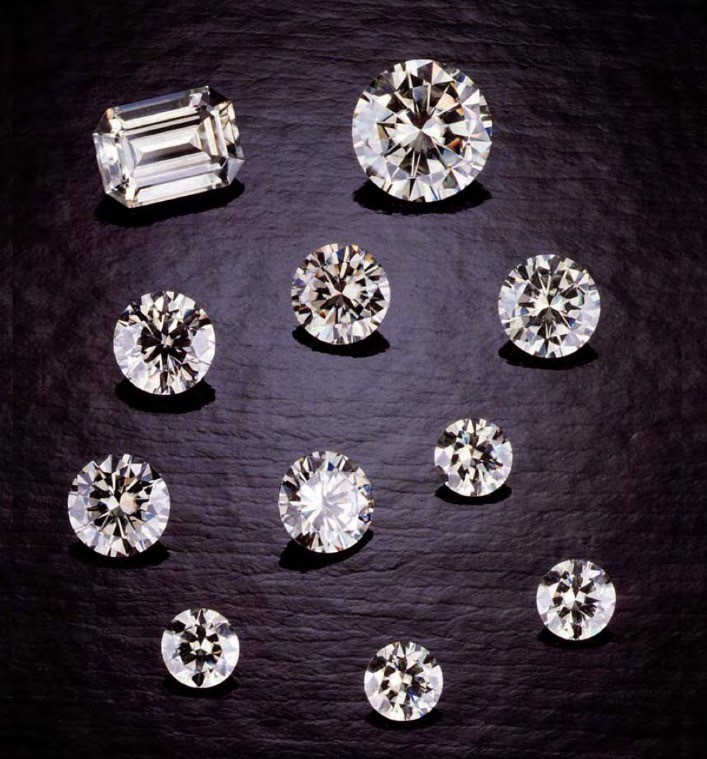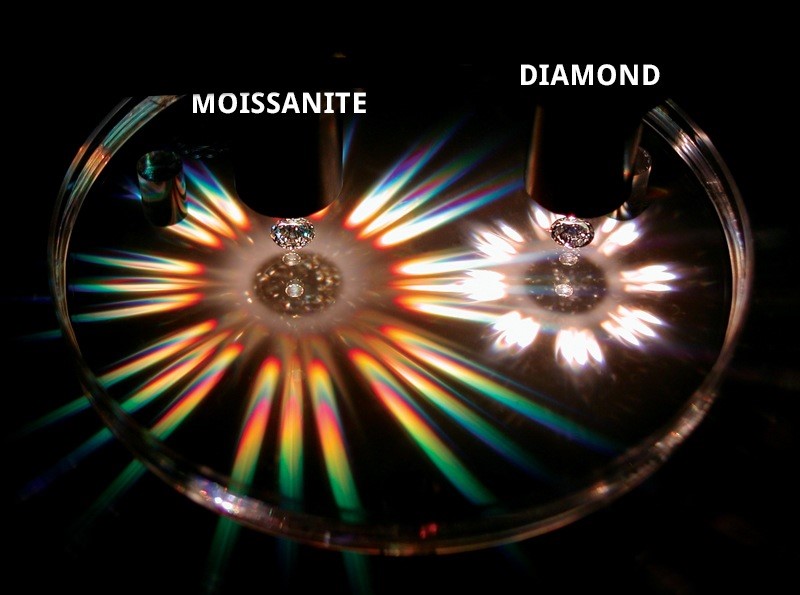
Synthetic Moissanite
06.10.17
On a daily basis, IGR lab comes across different jewellery and gemstones, especially diamonds. Unfortunately, not everything that looks like a diamond is a diamond, so this post we want to dedicate to a very convincing simulant called Synthetic Moissanite.
Moissanite has an interesting story to tell that began thousands of years ago, when a meteorite fell from the sky, creating an enormous crater that is known today as the Canyon Diablo in Arizona. Throughout the precise inspection of the outer space fragments, Dr Henri Moissan has discovered the traces of new mineral, natural silicon carbide, which was named in his honours in 1904. The discovery momentarily was noted to be the rarest substance as in its natural form is practically impossible to find, well, at least on Earth! The years of tests and studies concluded that the substance is of an extraordinary hardness that it made an excellent abrasive, and with such particular electric characteristics that it could be utilized in the semiconductor industry, and physical properties of a kind that could be used for jewellery. These exceptional qualities encouraged scientists to attempt to reproduce it synthetically.

Ferdinand Frederick Henri Moissan (28 .09.1852 – 20.02.1907) was a French chemist who won the Nobel Prize in Chemistry.
After many years, in 1998 the first gem-quality material saw the light. The results shook jewellers world; the well-cut synthetic moissanite looked identical to the King of Gemstones, Diamond!
The newborn stone is in the colourless range, although more colours get introduced from year to year. Unlike most other diamond simulants, synthetic moissanite was of similar hardness and thermal conductivity. The refractive index is a bit bigger with a higher dispersion, but to an untrained eye, it shines the same!

Synthetic Moissanite displaying higher dispersion and fire to Diamond
Although synthetic moissanite exceeds the simulants, nobody can claim the King's throne! The doppelganger belongs to a hexagonal crystal system, whereas diamond is part of the cubic crystal structure, which leads to differing optical properties. The double refraction in synthetic moissanite causes the doubling of the facet edges under 10x magnification. Sometimes it can be very hard to spot it as the doubling is not visible in all directions, so the orientation of the stone is crucial. If you are fishing for this optical effect, we strongly recommend to tilt the stone and look through the kite/star facets. The other thing that gives away its identity is the thin hair-like growth tubes, also referred to as needles forming downwards from the table. Some tiny gas bubbles can be seen, but that's very rare. The lab tests revealed, synthetic moissanite is an electrical conductor, whereas diamonds are electrical insulators, except for some blue diamonds.

The optical effect called doubling in synthetic moissanite. Photo by GIA.

Long subparallel needle-like inclusions in Synthetic Moissanite. Photo by John Koivula and Shane F. McClure.
Synthetic moissanite is a relatively new gem on the market, and scientists are still experimenting on improving its properties. Nowadays, experts are trying to remove the doubling effect as the sublimation process (the synthesis method) can form crystals of other structure, including the cubic variety. There have been rumours that altered (singly refractive) synthetic moissanite is on the market, however, we didn't have such specimen in our lab. We are keeping our eyes open! But don't you worry, if we get our hands on it, we will spread the news!




